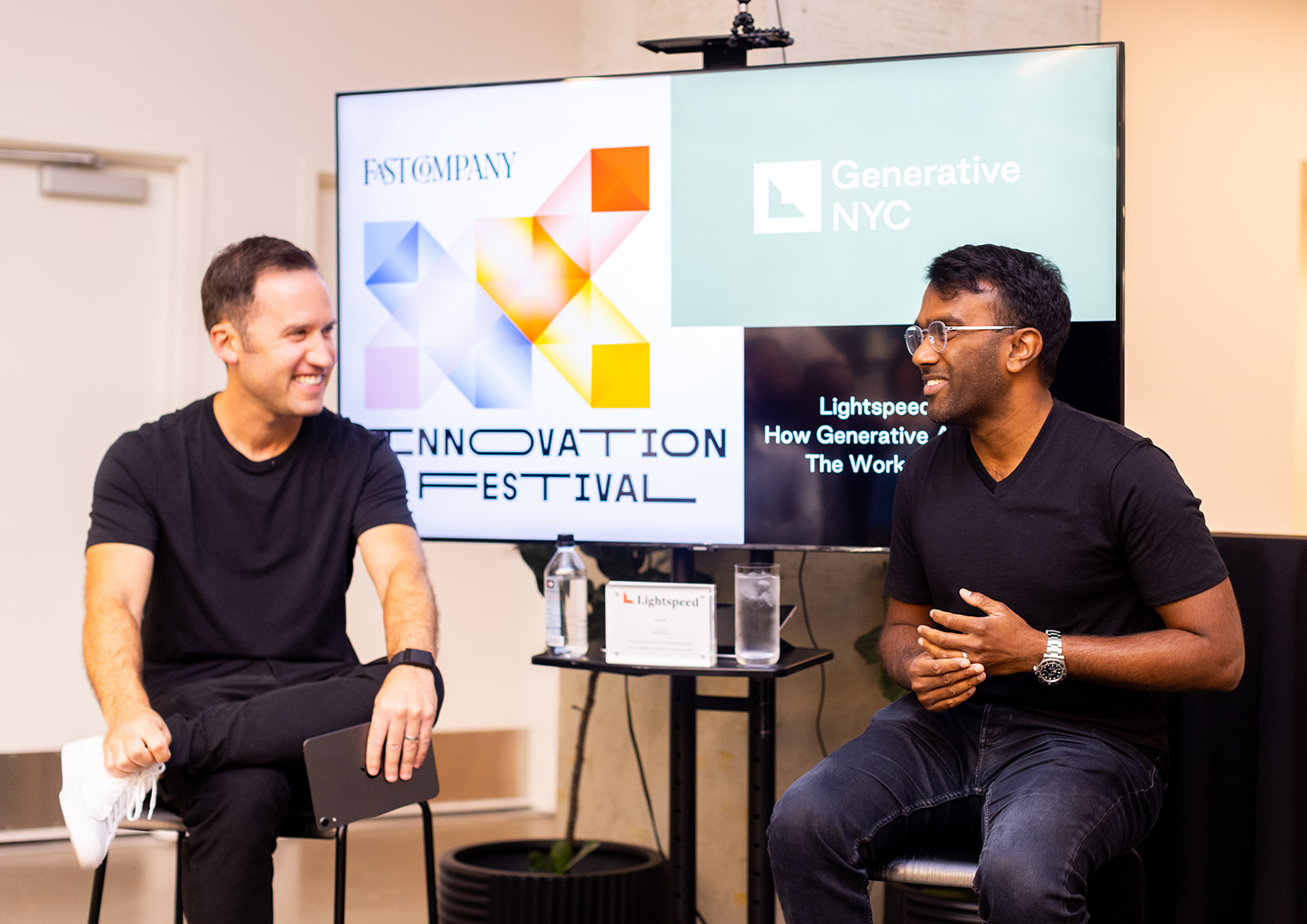
At Lightspeed’s most recent Generative NYC event, Tome cofounder & CEO Keith Peiris offered insights into his company’s AI-powered communication platform. The event, held in conjunction with Fast Company’s Innovation Festival, offered attendees a glimpse into how Peiris has built Tome, as he was interviewed by Lightspeed partner Michael Mignano. Tome has seen explosive growth over the past year by using large language models to help users structure narratives, convey complex ideas, and generate business documents more efficiently.
Peiris began his talk by explaining Tome’s mission to bring the ease of sharing experiences from the physical world into the realm of sharing ideas. Social media has made it simple to share photos and videos, but communicating concepts through mediums like slides can be tedious. Tome aims to change that by acting as a “thought partner” that assists with the cognitively demanding aspects of storytelling.
Before AI began to revolutionize software last year, Peiris and his co-founders were busily building out the core functionality of their formatting and editing tools. They tested Tome with small groups and refined it based on feedback. But it was challenging to gain traction without generative features. That changed once Tome began incorporating large language models into the platform.
The launch of GPT-3 in late 2020 was a turning point that accelerated Tome’s growth tremendously. Being able to prompt models for narrative structure and feedback opened up new possibilities. Peiris showed how Tome went from a seed-stage startup to serving millions of users per month by leveraging advances in AI. However, this rapid scaling also brought growing pains as Tome worked to support a much larger user base.
Peiris then demonstrated several ways Tome streamlines common business tasks. Users can generate polished resumes by prompting for templates and customizing sections. Or they can generate pitch decks for their business, like this “AI dog collar” example:
Pitch deck for an “AI dog collar” startup in seconds from @keithpeiris @magicaltome pic.twitter.com/jJrrFUI23N
— Paul Smalera (@smalera) September 18, 2023
Tome also facilitates research by building outlines on topics and embedding relevant images, charts, and text. Perhaps its most powerful use case is summarizing lengthy documents into presentation formats complete with slides on key takeaways.
In one example, Peiris pasted a long article about nuclear energy into Tome. It analyzed the text and automatically structured a presentation breaking the information into logical sections. This saves significant time versus manually reformatting content. Tome is also improving at iterative editing, asking follow-up questions and allowing users to refine outputs over multiple rounds.
@magicaltome just took a super dense doc about nuclear energy and turned it into an accessible summary in seconds #fcfestival pic.twitter.com/I56NU3OYTA
— Paul Smalera (@smalera) September 18, 2023
Beyond assisting individuals, Peiris explained Tome is working on features tailored for enterprise use cases. This includes injecting custom data sources so models leverage company-specific terminology and facts. With these additions, Peiris believes Tome can become mission-critical for teams across various industries.
Tome is a leading example of how generative AI is transforming business communication and creativity. By acting as a thought partner, Tome streamlines processes like resume writing, research, and content repurposing. Its growing suite of tools has the potential to significantly boost productivity for both individuals and entire companies.
As Tome continues refining its products with new AI techniques and enterprise features, it aims to establish itself as an indispensable idea-shaping platform for the workplace of the future.
Interested in the next Generative event hosted by Lightspeed? Enter your information here to sign up for our newsletter and receive notifications about future meetups.


